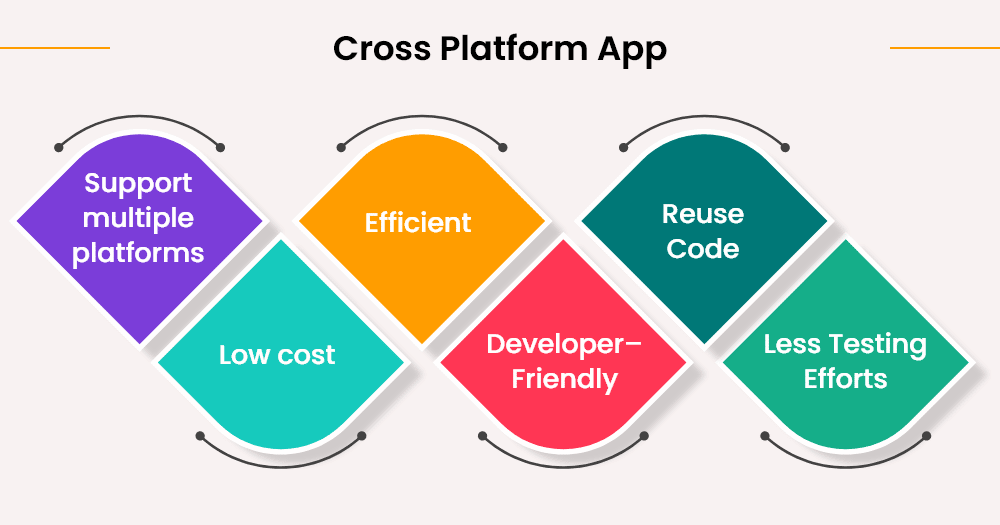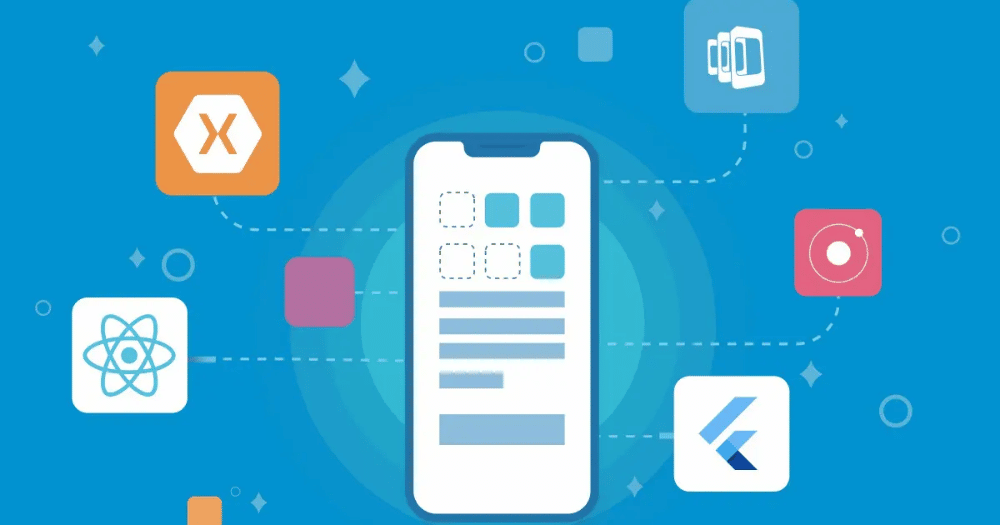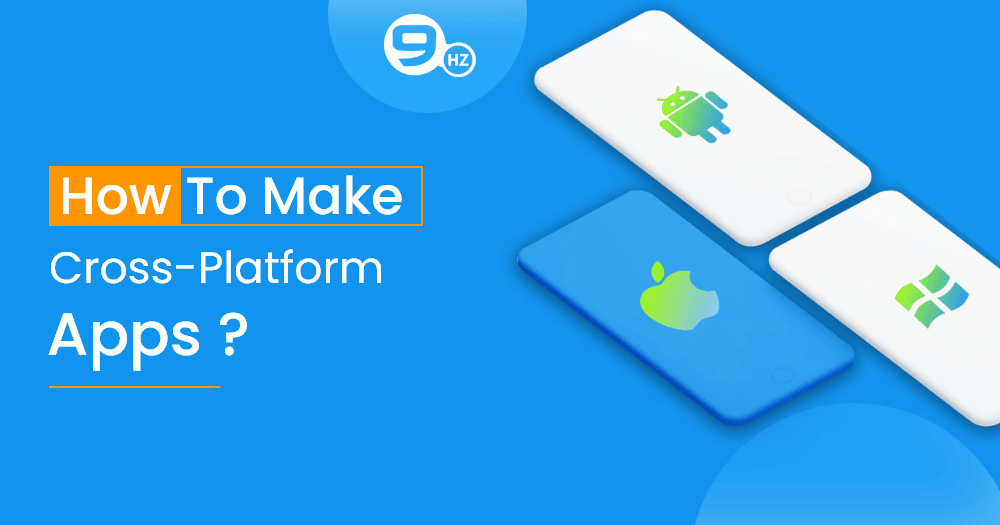The mobile app market is growing at an unprecedented rate. In 2024, the global app economy was valued at $540 billion and it is projected to reach $940 billion by 2028.es, including Evernote, UPS, and SAP. This growth is being driven by a number of factors, including the increasing use of smartphones and the availability of high-speed internet access. As more people turn to their mobile devices for entertainment, news, and shopping, businesses are looking to make cross-platform mobile apps to tap into this new market. In this guide, we will discuss how to make a cross platform mobile app.
There are a number of trends that are driving the growth of the mobile app market. There is an increase in the number of people who own smartphones. In 2024, there were 7.05 billion active smartphone users worldwide and this is projected to grow to 9.33 billion by 2027.
Second, there is an increase in the amount of time that people are spending on their mobile devices. This increased usage is being driven by a number of factors, including the rise of social media, and the popularity of streaming services such as Netflix and Hulu.
The mobile app market presents a significant opportunity for businesses that are looking to reach new customers and tap into new markets. By understanding the trends that are driving this market’s growth, businesses can make strategic decisions about how to make cross-platform mobile apps that will resonate with consumers. If You are looking for a development partner, The NineHertz is one of the top cross platform app development company.
Key Features to Create a Cross Platform Mobile App

-
Support Multiple Platforms
It supports multiple platforms, such as Windows, Mac, Linux, Android, and iOS. This means that developers only need to write one set of source code, which can then be compiled for each platform. cross-platform app development services has a number of benefits. cross-platform app development makes it easier to reach a wider audience since the app can be used on multiple platforms.
-
Low Cost
Businesses today are under pressure to develop mobile apps that run on multiple platforms. One cost-effective way to meet this demand is to use a cross-platform mobile app development tool. With single codebase can be used to generate apps for Android, iOS, and Windows Phone. This approach saves time and money, as developers do not need to create separate codebases for each platform.
-
Efficient
Cross platform development is more efficient than developing separate apps for each platform. This is because you only have to write the code once and it can be used for multiple platforms.
-
Developer–friendly
Cross-platform features are Developer–Friendly and allow developers to focus on a single codebase that can be deployed across multiple platforms. This results in increased efficiency and productivity as developers can target a wider range of devices with a single codebase.
Cross platform features allow for consistent user experiences across devices, which is essential for today’s mobile-first world. As users increasingly expect a seamless experience regardless of the device they are using, cross-platform features are becoming increasingly important for developers to consider.
-
Reuse Code
When building software, it is important to consider how the code will be used in the future. Will it need to be maintained? Will it need to be compatible with other platforms? One way to address these concerns is to reuse code. By using existing code libraries, you can reduce development efforts that need not be written from scratch. This not only saves time in the initial development process but also makes it easier to maintain the code over time.
-
Less Testing Efforts
When it comes to mobile app development, testing is a crucial part of the process. By ensuring that code meets standards and performs as expected, testing helps to ensure the quality of the final product. However, testing can be time-consuming due to test on multiple platforms like android ios and windows. Cross-platform development can help to reduce the amount of time needed for testing by allowing cross platfrom app developers in india to test code on multiple platforms at once.
Hire Hybrid App Developers
Request A Free Quote
How to Make a Cross Platform Mobile App? [Step by Step Process]

Creating cross-platform mobile apps has become increasingly popular in recent years, as businesses strive to reach the widest possible audience. There are a number of different ways to create cross platform apps, but the following steps provide a general overview of the process:
-
Define Your App Goals and Objectives
Before starting the development process of a cross platform mobile app, it’s important to first take the time to clearly define your goals and objectives. What is the purpose of the app? Who is the target audience? What features do you want to include? Answering these questions will help you develop a clear roadmap for the project and make sure that everyone involved is on the same page.
Once you have a good understanding of your goals, you can start researching which development platform will best meet your needs. There are a number of different options available, each with its own pros and cons. Once you’ve decided on a platform, you can begin building out your app. The development process can be complex, but by taking the time to plan ahead, you can ensure that your end product is successful.
-
Choose Your Cross-platform App Development Tool
There are many ways to develop cross-platform mobile apps. The most popular method is to use a cross-platform mobile app development tool. This will allow you to create one codebase that can be used on both iOS and Android devices.
There are a few different options when it comes to choosing a cross-platform development tool. Some of the most popular options include React Native, Flutter, and Ionic.
CHARACTERISTICS REACT NATIVE XAMARIN IONIC FLUTTER cross platform programming languages JavaScript, Objective C, Swift C#, .Net HTML, CSS, JavaScript DART Performance Slightly similar to native Close to native but moderate Moderate Outstanding GUI Require Native Same as React HTML, CSS Use widget for finest UI Code Reusability 90% code reusability 97% code reusability 99% code reusability 69-90% code reusability Community Support Strongest Lesser than native Strong Less popular Pricing Open-source Open Source + paid Open Source + paid Open-source Popular Apps Facebook, Instagram Storyo JustWatch HamilTon A) React Native
React Native is one of the popular cross platform app development languages. It is developed by Facebook and used by app like Airbnb. React Native uses JavaScript and React to create native apps for iOS and Android. Here you can hire react native app development services.B) Flutter
Flutter is another popular option for cross-platform mobile app development. It is developed by Google and used app like Amazon Alibaba, Tencent, and Google. Flutter uses Dart to create native apps for iOS and Android. Hire flutter app development services from Us.C) Ionic
Ionic is a popular option for cross-platform mobile app development. It is developed by Drifty Co and used by companies such as NASA, GE, and Samsung. Ionic uses HTML5, CSS3, and JavaScript to create hybrid apps for iOS and Android.Now that you know some of the most popular options for cross-platform mobile app development, it’s time to choose the right tool for your project.
-
Design your Cross platform app
There are a few things to keep in mind when designing a cross platform app. First, you need to make sure that the UI components is consistent across all screen size devices. This means using the same color scheme and icons and fonts and making sure that the layout is easy to understand regardless of the device. Second, you need to consider how the app will work offline.
This is especially important for apps that are designed for use in businesses or other situations where there may not always be an internet connection available. Finally, you need to make sure that the app is tested on all devices before it is released. This will help to ensure that there are no glitches or errors that could prevent users from being able to use the app on their devices.
-
Develop you App
Now that you have the basic structure of your app figured out, it’s time to start programming. This is where things can get a bit tricky, as you need to ensure that your app is scalable and secure. Once that is done, development can begin using any of the popular programming languages such as Dart, React, or ionic. The advantage of using a cross platform development approach is that it makes it easy to port the app to different platforms.
-
Test and launch your app
The final step in this process is to test and launch the app. This involves testing the app on all of the supported devices and platforms to ensure that it works as intended. Once the app passes all of the tests, it is ready to be launched. Depending on the app, this may involve submitting it to an app store or google play store. Once the app is launched, it is important to monitor it closely to ensure that there are no issues and to fix any bugs that may be found. By following these steps, you can ensure that your cross platform app will be successful.
Convert Your App Idea into Reality
Request A Free Quote
Top 6 Frameworks to Develop a Cross-platform App

There is a plethora of different cross platform development Frameworks available on the market today. Choosing the right one for your project can be a daunting task. To help you out, we’ve compiled a list of the top 6 tools currently available.
-
React Native
React Native is a popular cross-platform development framework developed by Facebook. It allows you to create native apps for both iOS and Android using JavaScript and React. React Native is used by some of the world’s biggest companies, including Instagram, Airbnb, and Tesla. You must read my other guide on Native Vs Cross-Platform Mobile App Development.
-
Flutter
Flutter is another popular cross platform development framework developed by Google. It uses Dart to create native apps for both iOS and Android. Flutter is used by some of the world’s biggest companies, including Alibaba, Tencent, and Google. You might be interested to know why flutter is best for app development.
-
Ionic
Ionic is a popular cross-platform development tool developed by Drifty Co. It uses HTML5, CSS3, and JavaScript to create hybrid apps for both iOS and Android. Ionic is used by some of the world’s biggest companies, including NASA, GE, and Samsung.
-
Cordova
Cordova is a popular cross-platform development tool developed by Apache. It allows you to create hybrid apps for both iOS and Android using HTML5, CSS3, and JavaScript. Cordova is used by some of the world’s biggest companies, including IBM, Microsoft, and Adobe.
-
Xamarin
Xamarin is a popular cross-platform app development framework developed by Microsoft. It allows you to create native apps for both iOS and Android using C# and .NET. there are lot of Xamarin examples is used by some of the world’s biggest companies, including Bosch, Honeywell, and Fox Sports.
-
NativeScript
NativeScript is a popular cross-platform development tool developed by Telerik. It allows you to create native apps for both iOS and Android using JavaScript. NativeScript is used by some of the world’s biggest companies, including Evernote, UPS, and SAP.
How Much Does it Cost to Make a Cross Platform App?
Creating a cross-platform app can be a great way to reach more people with your product or service. But how much cost of cross-platform app development? The answer depends on a number of factors, including the complexity of the app, the number of platforms you want to support, and the amount of time and effort you’re willing to put into mobile app development. Here you can find a detailed guide on app development costs worldwide.
If you’re looking to create a simple app that will work on multiple platforms, you can expect to pay anywhere between $5,000 to $10,000. If you need something more complex, or if you want to support a large number of platforms, the cost can easily balloon to $50,000 or more. Of course, these are just rough estimates – the actual cost will vary depending on your specific needs.
So if you’re thinking about creating a cross-platform app, be prepared to invest both time and money into the project. But if you do it right, the payoff can be well worth the effort.
FAQs: Create a Cross Platform Mobile App
1. What kind of App features support cross-platform app development?
There are a number of features that you can include in your cross-platform mobile app. Some of the most popular features include:
- GPS and location-based services
- Push notifications
- In-app purchases
- Social media integration
- Augmented reality
- Virtual reality
- Artificial intelligence
2. Can Android Studio make cross-platform apps?
No, Android Studio can not make cross-platform apps. Android Studio is only for developing native Android apps.
3. What is the best approach to developing a cross-platform mobile app?
The best approach to developing a cross-platform mobile app depends on your specific needs and goals. If you need to reach a wide audience quickly and cost-effectively, then cross-platform development is a good option. However, if you require the full power of native apps, then native app development may be the better choice.
4. How do cross-platform apps work?
Cross-platform apps are created using a combination of HTML, CSS, and JavaScript. This code is then compiled into a native app for each platform (iOS, Android, etc.). The advantage of this approach is that it allows you to develop your app once and deploy it to multiple platforms.
Great Together!

![How to Make an iPhone Game? [2026 Guide]](https://theninehertz.com/wp-content/uploads/2022/12/How-to-Make-an-iPhone-Game.png)







